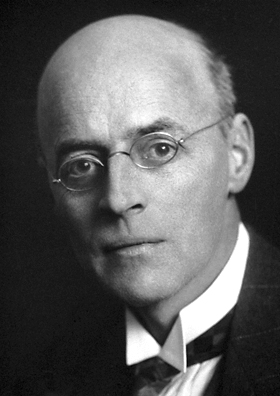Why was Owen Willans Richardson Awarded the Noble Prize for Physics in 1928?
Owen Willans Richardson: Nobel Laureate for Pioneering Electron Emission (1928)
Owen Willans Richardson, a British physicist, made remarkable contributions to the field of electron emission during the early 20th century. Renowned for his experimental achievements and theoretical insights, Richardson played a pivotal role in advancing our understanding of electron behavior and its applications in technology. In recognition of his groundbreaking research, he was awarded the Nobel Prize for Physics in 1928. This article explores the reasons behind Richardson’s prestigious honor and highlights his significant scientific breakthroughs.

Richardson’s Law of Thermionic Emission:
Owen Willans Richardson’s Nobel Prize was primarily awarded for his discovery and theoretical explanation of the phenomenon known as thermionic emission. In 1901, Richardson formulated Richardson’s Law, also called the thermionic emission equation, which described the relationship between temperature, electric field, and electron emission from a hot metal surface.
Richardson’s Law established that the current of electrons emitted from a heated metal surface increased exponentially with temperature. The equation provided a quantitative understanding of the phenomenon, enabling scientists to predict and control electron emission in various applications.
Significance in Vacuum Tubes and Electronics:
Richardson’s Law of thermionic emission had profound implications for the development of vacuum tubes and electronics. Vacuum tubes, based on the principles of thermionic emission, became fundamental components of early electronic devices such as radios, televisions, and amplifiers.
By understanding and controlling electron emission, Richardson’s work paved the way for significant advancements in electronic technology. Vacuum tubes enabled the amplification and modulation of electrical signals, serving as the foundation for the development of modern electronics and computing systems.
Contributions to Quantum Mechanics:
Beyond his work on thermionic emission, Owen Willans Richardson also made notable contributions to the field of quantum mechanics. He developed theoretical models and mathematical formulations that provided insights into the quantum behavior of electrons, specifically their wave-like properties.
Richardson’s contributions to quantum mechanics deepened our understanding of electron behavior and its interaction with matter. His theoretical insights contributed to the broader development of quantum theory, which revolutionized our understanding of the microscopic world.
Recognition and Legacy:
Owen Willans Richardson’s Nobel Prize for Physics in 1928 celebrated his exceptional scientific achievements and the significant impact of his work on electron emission. His discovery and formulation of Richardson’s Law of thermionic emission revolutionized electronic technology, enabling the development of vacuum tubes and laying the foundation for modern electronics.
Richardson’s contributions to quantum mechanics further expanded our understanding of the wave-particle duality of electrons and their behavior at the atomic level. His theoretical insights contributed to the development of quantum theory, influencing subsequent research and advancements in the field.
Conclusion:
Owen Willans Richardson’s Nobel Prize for Physics in 1928 celebrated his groundbreaking contributions to electron emission and its applications in technology. His formulation of Richardson’s Law provided a quantitative understanding of thermionic emission, revolutionizing the development of vacuum tubes and electronic devices. Richardson’s work not only had a profound impact on technology but also deepened our understanding of quantum mechanics and electron behavior. His legacy serves as a testament to the transformative power of experimental and theoretical research in advancing our understanding of the natural world and shaping the technological advancements of modern society.




